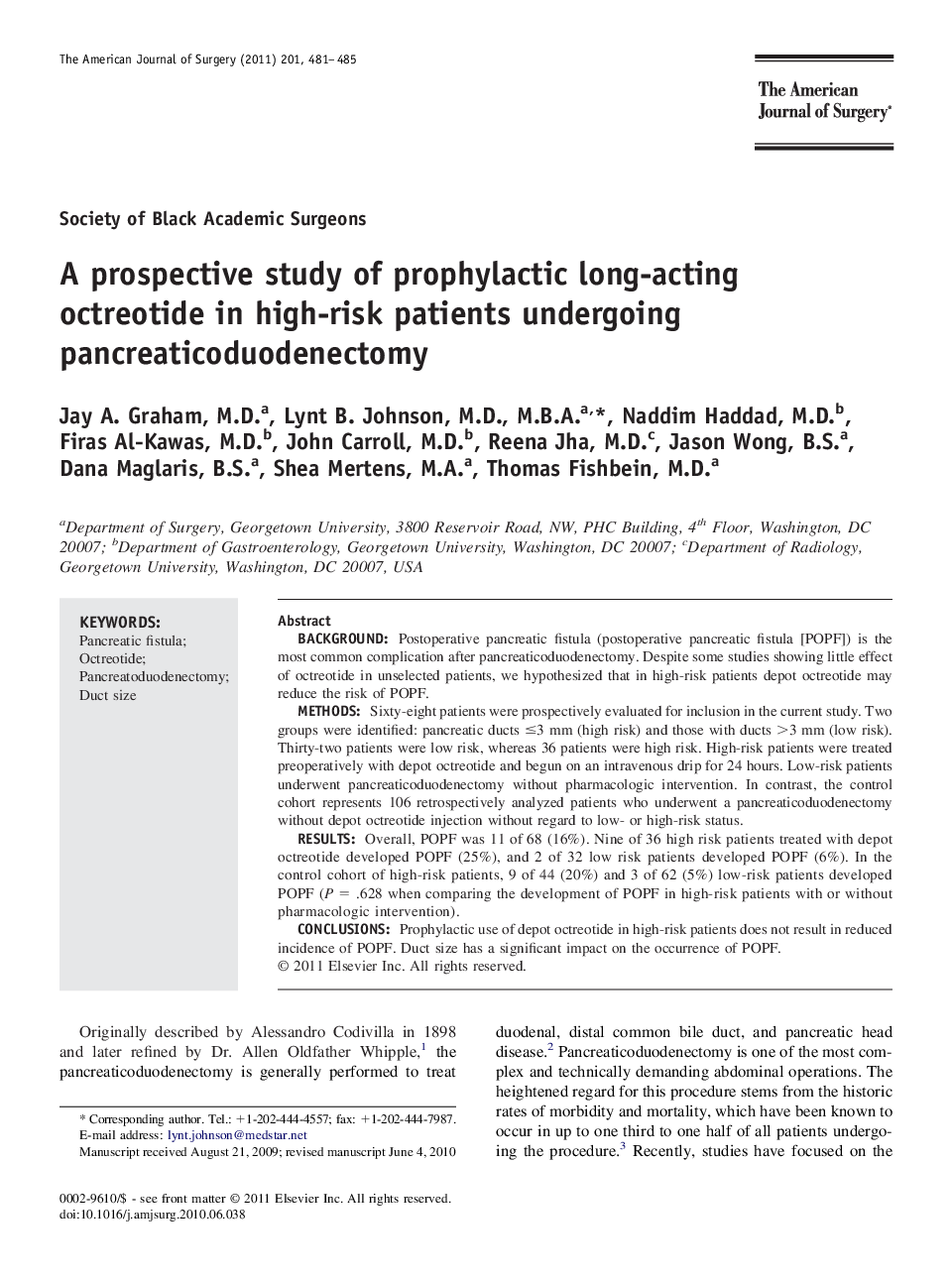| کد مقاله | کد نشریه | سال انتشار | مقاله انگلیسی | نسخه تمام متن |
|---|---|---|---|---|
| 4279482 | 1611544 | 2011 | 5 صفحه PDF | دانلود رایگان |

BackgroundPostoperative pancreatic fistula (postoperative pancreatic fistula [POPF]) is the most common complication after pancreaticoduodenectomy. Despite some studies showing little effect of octreotide in unselected patients, we hypothesized that in high-risk patients depot octreotide may reduce the risk of POPF.MethodsSixty-eight patients were prospectively evaluated for inclusion in the current study. Two groups were identified: pancreatic ducts ≤3 mm (high risk) and those with ducts >3 mm (low risk). Thirty-two patients were low risk, whereas 36 patients were high risk. High-risk patients were treated preoperatively with depot octreotide and begun on an intravenous drip for 24 hours. Low-risk patients underwent pancreaticoduodenectomy without pharmacologic intervention. In contrast, the control cohort represents 106 retrospectively analyzed patients who underwent a pancreaticoduodenectomy without depot octreotide injection without regard to low- or high-risk status.ResultsOverall, POPF was 11 of 68 (16%). Nine of 36 high risk patients treated with depot octreotide developed POPF (25%), and 2 of 32 low risk patients developed POPF (6%). In the control cohort of high-risk patients, 9 of 44 (20%) and 3 of 62 (5%) low-risk patients developed POPF (P = .628 when comparing the development of POPF in high-risk patients with or without pharmacologic intervention).ConclusionsProphylactic use of depot octreotide in high-risk patients does not result in reduced incidence of POPF. Duct size has a significant impact on the occurrence of POPF.
Journal: The American Journal of Surgery - Volume 201, Issue 4, April 2011, Pages 481–485